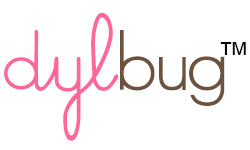By Guest Blogger Kim Heyer
Hello, I am Kim, a pediatric Occupational Therapist and Mommy to my preschool daughter -Kendall. One area we support as Occupational Therapists is with mealtime and feeding skills. I am especially passionate about supporting families with feeding needs as I myself was a picky eater as a child, and my daughter had reflux as a baby and had many feeding issues…I understand from both sides how frustrating and stressful mealtime can be.
I am loving Leslie’s Dylbug plates and food cutters as a great strategy and tool for supporting mealtime fun with picky eaters and encouraging food exploration!! I wanted to share with you some steps I have found helpful when introducing a non-preferred or new food to your child to encourage a stress free mealtime experience…
Step 1-Tolerate a new food on your plate-changing one food item on your plate is a good start with introducing a new food. Your child will then see and smell the new food. I would recommend keeping everything else the same-preferred foods, familiar plate, cup, etc. If your child does not tolerate the new food on their plate, that is OK, start with tolerating it on the table or even smelling it in the kitchen or on other’s plates is a good start.
*Depending on your child and their feeding needs, new foods might be a similar food to a preferred food, or it may be a preferred food prepared in a new way, for example, say your child likes apples, you could try applesauce or pears.

Step 2-Once your child has tolerated the food item on their plate or in close proximity, the next step would be touching and
interacting with the food. There are so many fun ways you can incorporate touching food into play, below are some activity ideas:
-move the food item from one side of plate to another, or to a new bowl
-veggie art stamping-use cut veggies and dip in ketchup/mustard or paint (see pic)
-putting food items on Lego trains or any train/car toys and transport around or put car items in food item (i.e., roll over cooked pasta or refried beans to make tracks) yes, its OK to get messy!
-feeding puppets-a great way to model they can taste and spit out food if they don’t like it
-have a “pretend” picnic, lay a towel on ground and have child pass food out and put on plates
-cookie cutter play with food (ie: cheese) to make designs
-food designs with toothpicks (ie: cheese cubes, grapes)
-stacking foods
-cutting softer foods with scissors
-decorating Dylbug plates with food
-helping with meal prep
*If your child is adverse to touching the food you can provide them with a protective barrier to start with-i.e. put food in cupcake holder, or touch item when in a zip lock bag


Step 3- Kiss the food- usually the more solid the food the easier it is, as the more wet the texture will stay on your lips. When the kids I work with are at this step I often will have them kiss the food item goodbye and move it from their plate to another bowl next to their plate. You can also do “crumb kisses” where you smush a cracker like food (i.e.: saltines, graham crackers) and put lips to the food item and then look in mirror…kids often think this is hilarious!



Most importantly I truly believe in the “get permission” approach to feeding, meaning if your child is turning away (head and body) with their mouths closed, this is their body clue indicating that they do not want to try it, please do not force feed! Eating has a strong emotional component, so we want to strive for an enjoyable and stress free mealtime experience. If your child is turning away from a certain food at any step, I would recommend going back a step and trying again another day, or trying another food. Also, I would recommend having the parent or caregiver model and start with each of these steps/ activities and encourage other siblings to participate as well, many kids learn through others and like the group experience.
I hope you have found this information helpful, please keep in mind that every child is different and unique with their feeding needs and that these are general suggestions. If you have any feeding concerns with your child, I would recommend consulting with your Pediatrician or a pediatric Occupational Therapist or Speech and Language Pathologist with feeding expertise for further support.
Go visit Kim Heyer on instagram at @preferredtherapytoys





